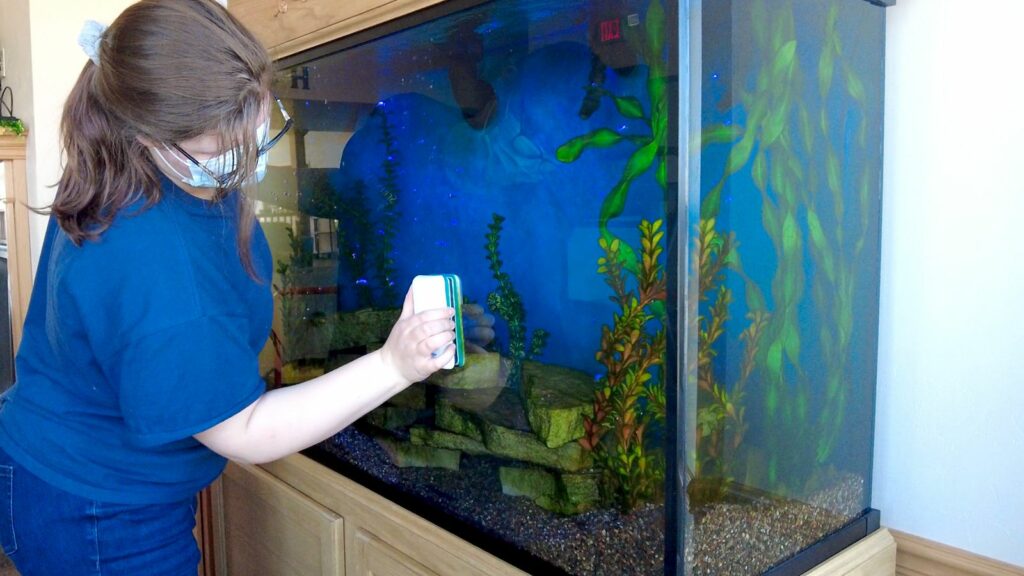Pulse of Information
Your source for the latest insights and updates.
Aquarium Alchemy: Turning Water into Wonders
Discover the magic of Aquarium Alchemy! Transform your tank into breathtaking aquatic wonders and unleash the beauty of underwater life.
The Science of Aquatic Ecosystems: How to Create a Thriving Aquarium
The science of aquatic ecosystems is essential for understanding how to create a thriving aquarium. At its core, an aquarium mimics the natural habitats of aquatic life, which means it's crucial to replicate aspects such as water chemistry, temperature, and lighting. Start by researching the specific needs of the fish and plants you wish to keep, as different species thrive in different conditions. Regularly test your water for pH, ammonia, nitrites, and nitrates, as maintaining a balance will ensure that your aquatic ecosystem remains healthy and sustainable.
To enhance the growth of your aquarium's ecosystem, consider incorporating a variety of elements to promote biodiversity. Live plants not only enhance the aesthetic appeal but also improve oxygen levels and provide hiding spaces for fish. Additionally, utilizing the cycle method helps establish beneficial bacteria that break down waste products. Remember that a thriving aquarium requires patience and consistent care; therefore, regular maintenance, including water changes and tank cleaning, are vital to sustaining a robust aquatic environment.

Top 10 Essential Tips for Transforming Your Aquarium into a Stunning Underwater World
Transforming your aquarium into a stunning underwater world begins with careful planning and attention to detail. Start by selecting the right tank size, as larger tanks provide more stability in terms of water parameters and give you more room for creativity. Choose a theme for your aquarium, whether it's a vibrant reef setup or a serene natural habitat, to guide your decisions on decorations and inhabitants. Consider incorporating live plants for added beauty and improved water quality, as they can serve both aesthetic and functional purposes. Additionally, investing in high-quality filtration and lighting is crucial; these elements contribute to the health of your fish and plants, as well as the overall ambiance of your underwater paradise.
Once the fundamentals are in place, it’s time to focus on the aquascaping aspect of your aquarium. Use natural materials like rocks, driftwood, and substrate to create layers and hideouts, mimicking a natural environment. Consider the placement of your ornaments and plants, allowing for open swim spaces while also providing shelter for shy fish. Incorporating a variety of colors, shapes, and textures will enhance the visual interest of your aquarium. Lastly, don’t forget about the livestock: choosing a balanced mix of fish and invertebrates that complement each other will complete your stunning underwater world while ensuring compatibility and harmony in your aquarium ecosystem.
Common Mistakes to Avoid When Setting Up Your First Aquarium
Setting up your first aquarium can be an exciting yet daunting task. One common mistake many beginners make is rushing the cycling process. Cycling is crucial as it establishes beneficial bacteria that help maintain water quality. Skipping this step or not being patient enough can lead to deadly ammonia spikes, putting your fish at serious risk. Always remember, slow and steady wins the race; let your aquarium cycle for at least 4-6 weeks before introducing any fish.
Another prevalent misstep is overcrowding the aquarium. Many novice aquarists become overly enthusiastic and add too many fish too quickly. This not only stresses the fish but also leads to poor water quality, which can compromise the health of your aquatic life. To avoid this, it's wise to research the species you're interested in and follow the 'one inch of fish per gallon' rule as a general guideline. By giving your fish the space they need, you’ll foster a healthy and thriving aquarium.